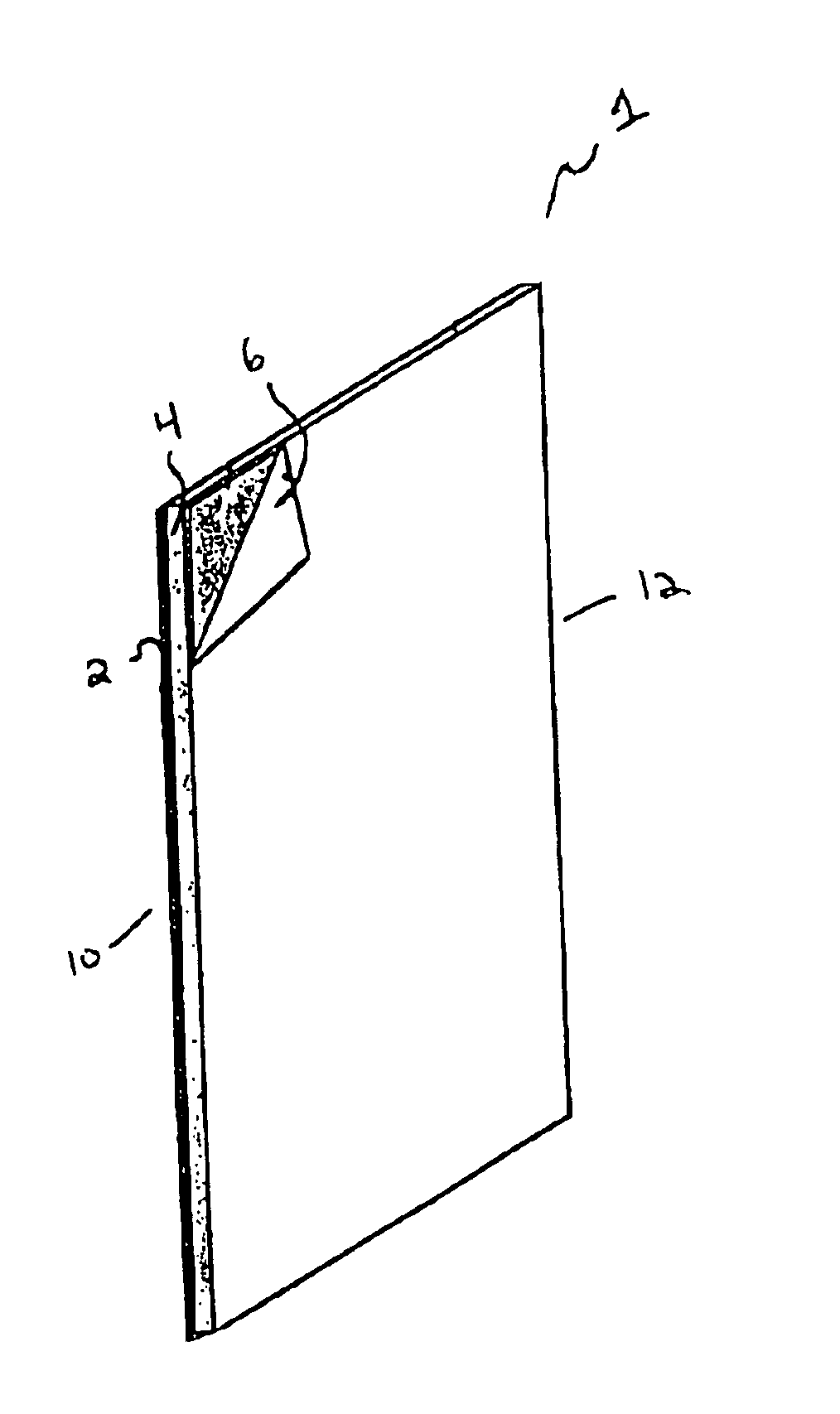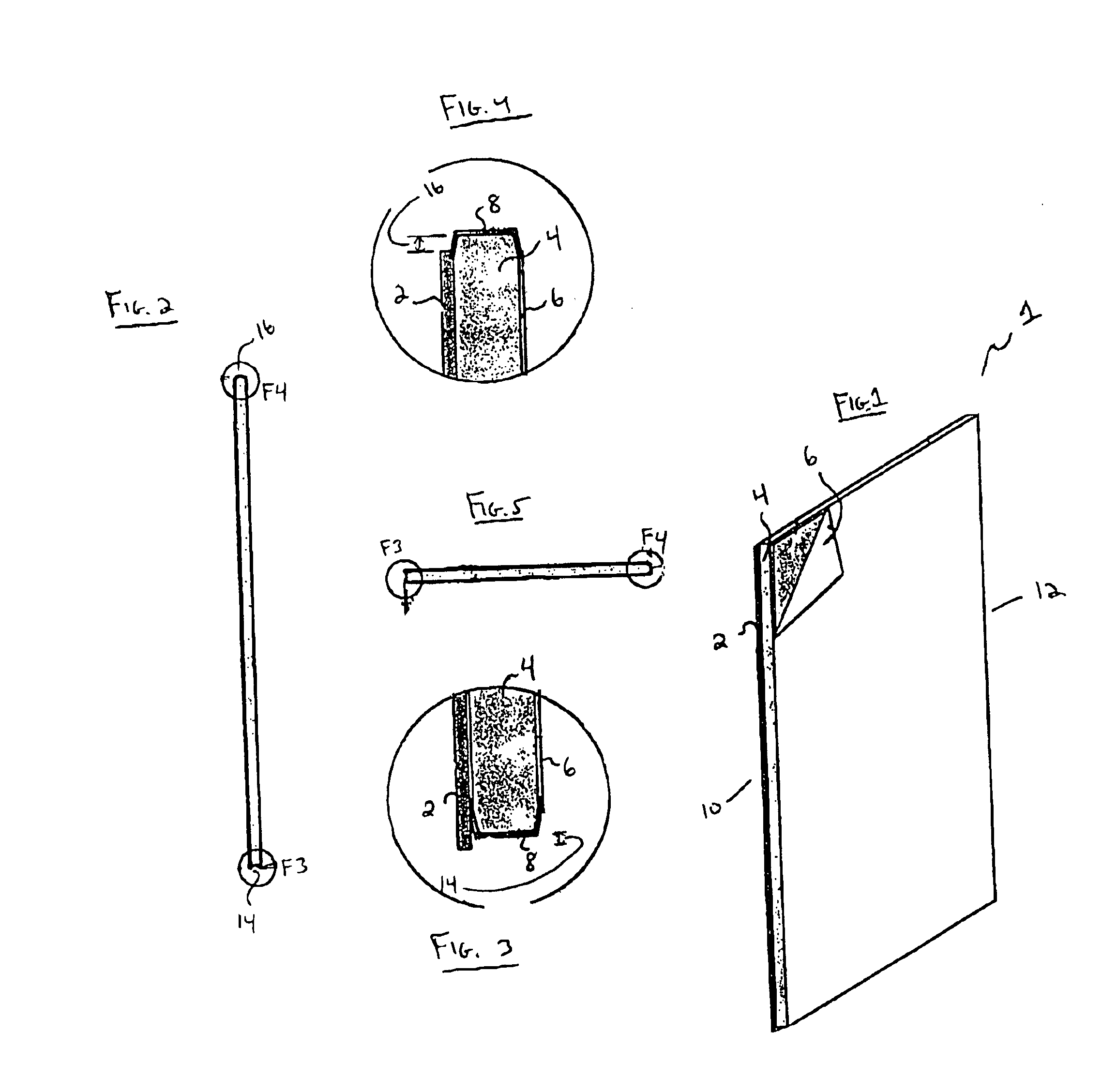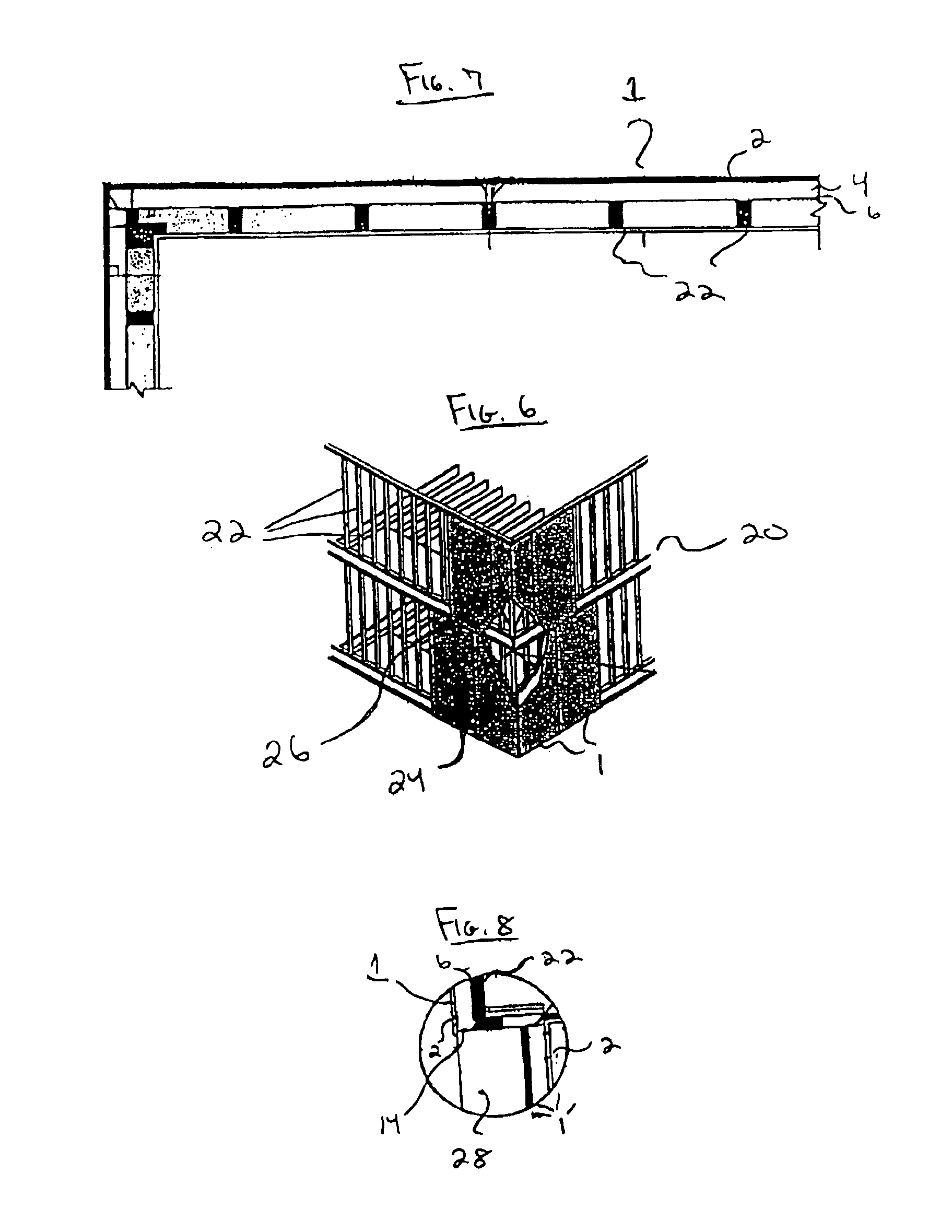Prefabricated sealed composite insulating panel and method of utilizing same to insulate a building
a composite insulating panel and sealed technology, applied in the direction of building components, roof coverings, construction materials, etc., can solve the problems of inefficient construction methods, increased labor costs, and inability to meet the needs of construction, so as to reduce thermal bridging and air leakage, facilitate proper positioning of adjacent panels, and reduce the effect of thermal bridging
- Summary
- Abstract
- Description
- Claims
- Application Information
AI Technical Summary
Benefits of technology
Problems solved by technology
Method used
Image
Examples
Embodiment Construction
Referring to first to FIG. 1, a sealed insulating composite panel 1 according to the present invention is shown. The composite panel 1 generally comprises an outer board layer 2 thermally fused to first surface of an inner insulating core 4, for example, expanded polyurethane. The opposite surface of the insulating core 4 is thermally fused to a layer of aluminum foil 6. The composite panel 1 may be manufactured in any dimensions, although preferably in dimensions that will suit typical building construction dimensions. For instance, it is preferred that the composite panel 1 be 4 feet by 8 feet or 4 feet by 9 feet as such dimensions are common and typical for the construction industry. A panel 1 measuring 4 feet by 9 feet may be used to not only provide insulation to the length of a wall, but also to insulate the floor of each story of a building, thereby preventing thermal bridging across floor members. The thickness dimension of the composite panel is typically between about 2 in...
PUM
 Login to View More
Login to View More Abstract
Description
Claims
Application Information
 Login to View More
Login to View More - R&D
- Intellectual Property
- Life Sciences
- Materials
- Tech Scout
- Unparalleled Data Quality
- Higher Quality Content
- 60% Fewer Hallucinations
Browse by: Latest US Patents, China's latest patents, Technical Efficacy Thesaurus, Application Domain, Technology Topic, Popular Technical Reports.
© 2025 PatSnap. All rights reserved.Legal|Privacy policy|Modern Slavery Act Transparency Statement|Sitemap|About US| Contact US: help@patsnap.com



